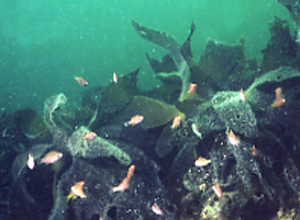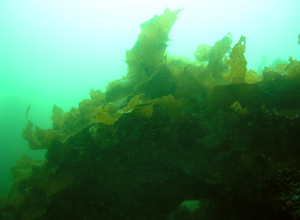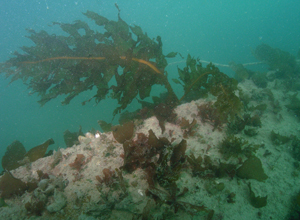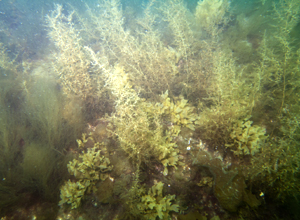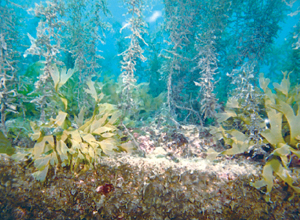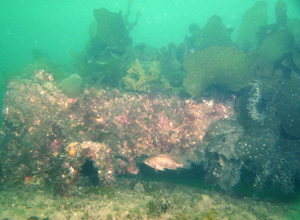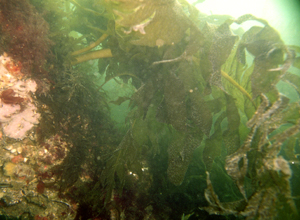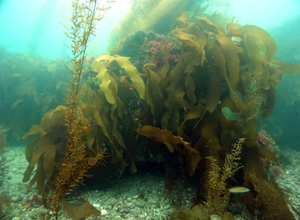Artificial reefs/Breeding reefs/Underwater survey
TEL. +81-3-6426-1024
Address: 2-11-5 Futaba, Shinagawa-ku, Tokyo, Japan〒142-0043
Creation of seaweed bedseaweed
A place where seaweed grows in the shallow sea of the coast is called “seaweed bed”.
Seaweed beds serve as a place for environmental conservation, spawning grounds for marine products such as fish, and hiding places.We would like to introduce an example of seaweed growth on our artificial reefs and breeding reefs in the creation of seaweed bed project.
Seaweed growth case
1.Akita Prefecture FP1.5G-B
2.Akita Prefecture πBlock8ttype
3.Chiba Prefecture FP3.25type
4.Ishikawa Prefecture FP3.25type
5.Wakayama Prefecture FP1.5G-B
6.Hyogo Prefecture FP2.00type
7.Yamaguchi Prefecture πBlock2ttype
8.Tokushima Prefecture πBlock8ttype
9.Oita Prefecture Culbase attached FP3.25type
10.Kumamoto Prefecture πBlock2ttype
1.Off the coast of Happo Town, Akita Prefecture
In the block, epiphytes such as Sargassum confusum, Sargassum horneri, Undaria pinnatifida, and Chondrus ocellatus Holmes were observed.The
blocks with Sargassum confusum and Undaria pinnatifida overgrow to 50-60
cm were also confirmed.
| Year of creation 2012-2013 |  FP1.5G-B |
 |
| Water depth 5-6m | ||
| Survey date May 2015 7-10 years after installation |
||
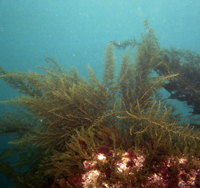 Sargassum confusum |
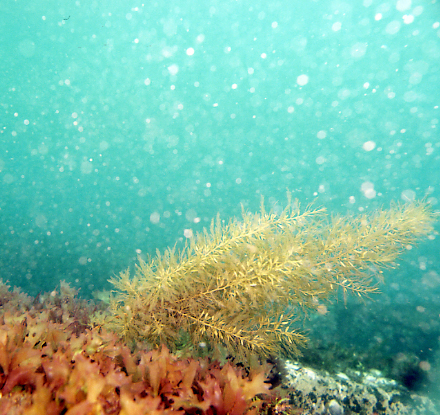 Sargassum horneri / Chondrus ocellatus Holmes |
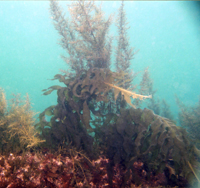 Undaria pinnatifida |
2.Off the coast of Happo Town, Akita Prefecture
Multiple species of Sargassum sp. overgrown on the upper surface of the block to form a Sargassum bed, and some of them grew to about 1 m. A lot of Undaria pinnatifida
and red algae have grown in the gaps of the Sargassum sp.. Haliotis and
Apostichopus armata were also observed on the side of the block.
| Year of creation 2006-2009 | 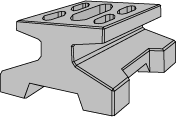 πBlock8ttype |
 |
||
| water depth 6-7m | ||||
| Survey date May 2015 7-10 years after installation |
||||
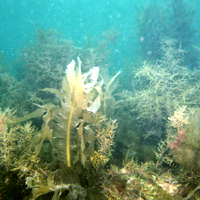 Sargassum sp./ Undaria pinnatifida |
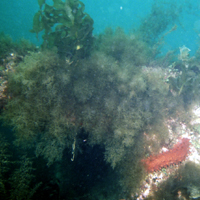 Sargassum sp./ Apostichopus armata |
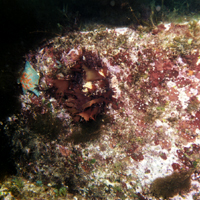 Haliotis |
||
3.Off the coast of Tomiyama Town, Chiba Prefecture
The block was overgrown with Ecklonia cava with 15 to 30 cm. Ecklonia kurome and Sargassum sp. were also seen. In the gaps between
seaweeds, small fishes and a few centimeters of juveniles were observed
swimming, and blocks and seaweeds had formed a nursery for juveniles.
| Year of creation 1999 |  FP3.25type |
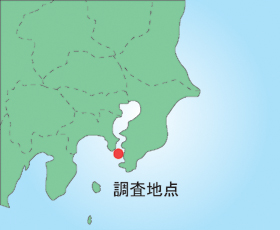 |
||
| water depth 23m | ||||
| Survey date: March 2002 2 years after installation |
||||
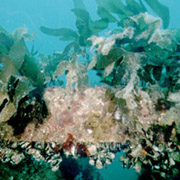 Ecklonia cava |
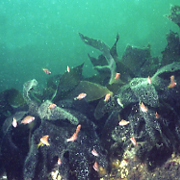 Ecklonia cava /young juveniles of Sebastes inermis |
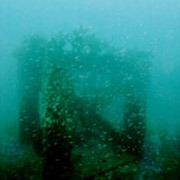 unknown species of young juveniles |
||
4.Off the coast of Notojima, Ishikawa Prefecture
A lot of Crassostrea nippona were growing on the surface of the block,
and the Sargassum sp. was overgrown at the top. This seaweed bed functioned
as a habitat, and many small fishes were seen, and swimming of piscivorous
fishes were also observed aiming at it.
| Year of creation 2003 |  FP3.25type |
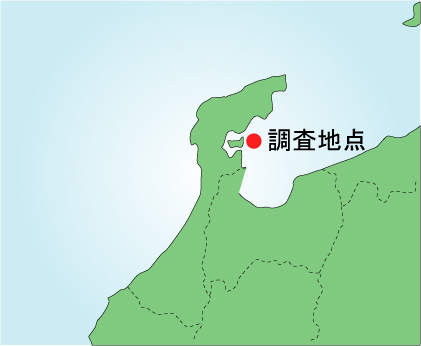 |
||
| water depth 17-18m | ||||
| Survey date: December 2002 9 years after installation |
||||
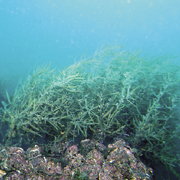 Sargassum sp./ Crassostrea nippona |
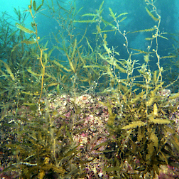 Sargassum sp. |
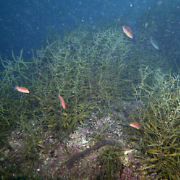 Sargassum sp. / Wrasse |
||
5.Off the coast of Wakayama City, Wakayama Prefecture
A lot of brown algae (Ecklonia cava and Undaria pinnatifida) have grown on the block, and all of the observed Ecklonia cava were young. In the block installed at a depth of 5 m, total of 263 young Ecklonia cava per square meter, weighing 2,615 g were growing.
| Year of creation 2005 |  FP1.5G-B |
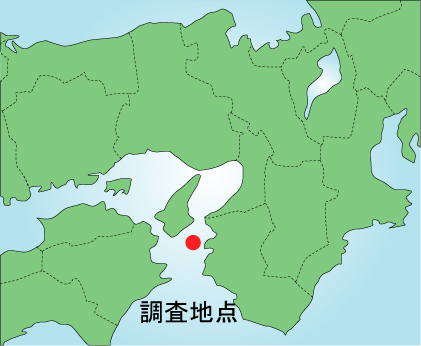 |
||
| water depth 4-11m | ||||
| Survey date: Aplil-May 2006 7-11months after installation |
||||
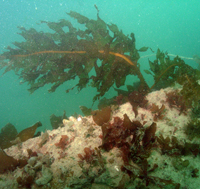 Undaria pinnatifida / young Ecklonia cava |
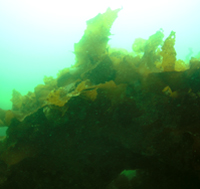 young Ecklonia cava |
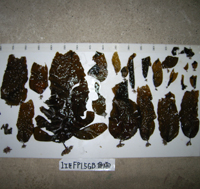 collected seaweed |
||
6.Off the coast of Minamiawaji City, Hyogo Prefecture
The block was overgrown with large brown algae (Undaria pinnatifida and Sargassum sp.). Among them, Undaria pinnatifida grew on the entire block and grew to 1 m or more, and Mekabu(Sporophyll of Undaria pinnatifida )was also observed at the root. In addition, a lot of red algae such as Meristotheca papulosa were found.
| Year of creation 2009-2011 | 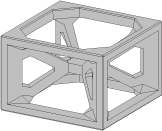 FP2.00type |
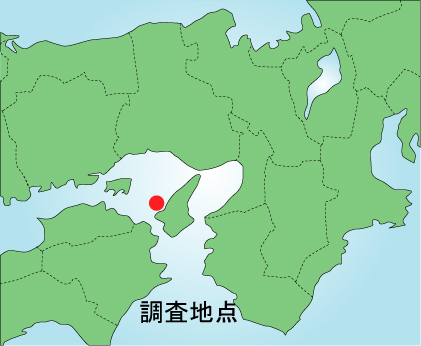 |
||
| water depth 5-8m | ||||
| Survey date: March 2015 7 years after installation |
||||
| ▶Survey case video | ||||
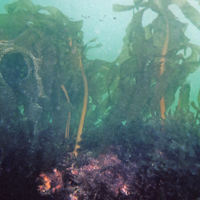 Undaria pinnatifida |
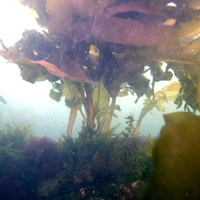 Undaria pinnatifida/ Sargassum sp. |
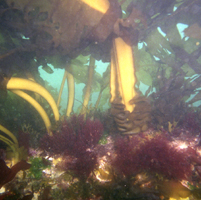 Undaria pinnatifida(Mekabu)/ Meristotheca papulosa |
||
7.Off the coast of Suo-oshima Town, Yamaguchi Prefecture
The upper part of the block and the surface were covered with brown algae (Sargassum horneri, Padina arborescens, Hydroclathrus clathratus, etc.) and red algae. Sargassum horneri was 1 to 2 m overgrown, and some of them have grown to about 4 m and had reached near the sea surface.
| Year of creation 2002 |  πBlock2ttype |
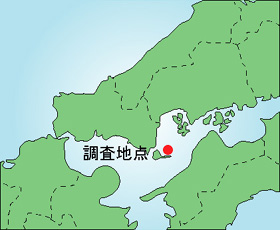 |
||
| water depth 5m | ||||
| Survey date: February 2007 4 years after installation |
||||
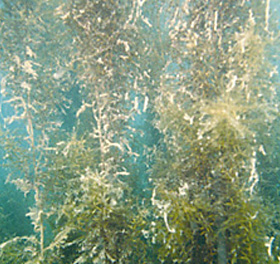 Sargassum horneri |
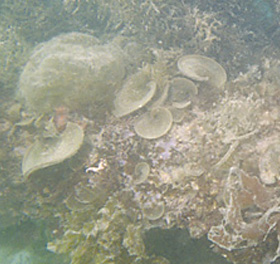 Hydroclathrus clathratus |
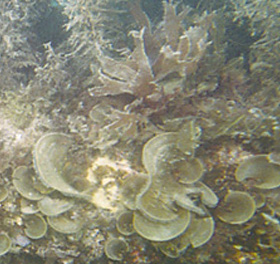 Sargassum horneri / Padina arborescens |
||
8.Off the coast of Anan Town, Tokushima Prefecture
A lot of brown algae (Ecklonia cava and Sargassum sp.) was observed on the top and sides of the block. In addition, small fishes are swimming near the grown Ecklonia cava, and this seaweed bed was thought to function as a hiding place for them.
| Year of creation 1995 |  πBlock8ttype |
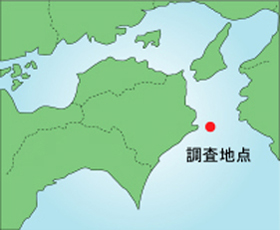 |
||
| water depth 7-8m | ||||
| Survey date: November 2003 8 years after installation |
||||
 Ecklonia cava/Sargassum sp. |
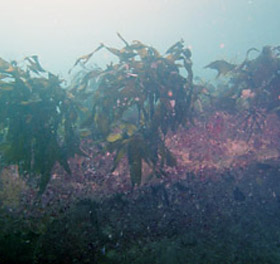 Ecklonia cava |
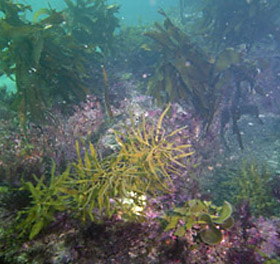 Sargassum sp./ Ecklonia cava |
||
9.Off the coast of Beppu City, Oita Prefecture
In this area, we have conducted 9 surveys over 10 years since 2008.
One year after the block was installed, Sargassum sp. grew on the upper
surface of the Culbase panel, and 5years later, more Ecklonia kurome were
observed. After that, it was confirmed that useful seaweeds such as Sargassum
sp. and Ecklonia kurome continued to grow.
This study demonstrated that Culbase is effective as a seaweed breeding reef and its effectiveness lasts for more than 10 years.
| Year of creation 2006,2007 |  Culbase attached FP3.25type |
 |
||
| water depth 12m | ||||
| Survey date: March 2008 1 year after installation |
||||
| ▶Survey case video | ||||
 Sargassum sp. |
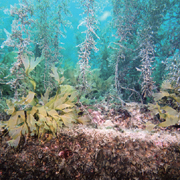 Sargassum sp. |
 Sargassum sp. |
||
| Survey date: April 2012 5years after installation | ||||
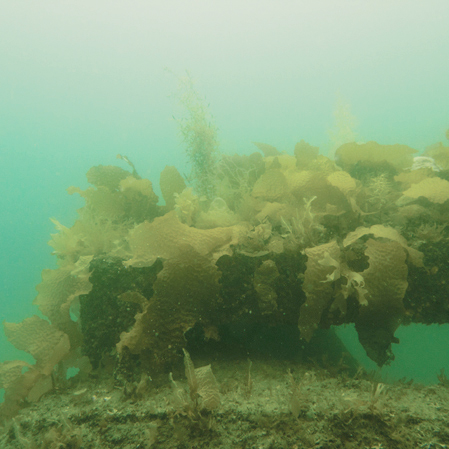 Ecklonia kurome |
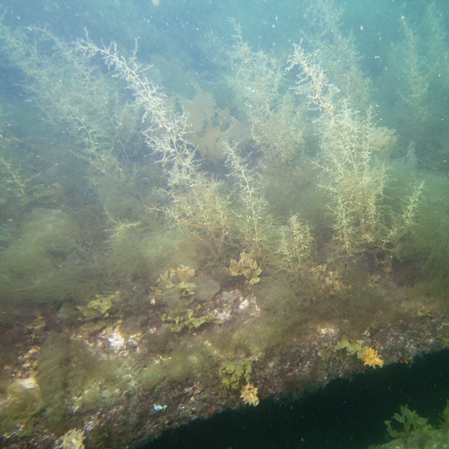 Sargassum sp. |
 Sargassum sp.
Sargassum sp. |
||
| Survey date: March 2015 8 years after installation | ||||
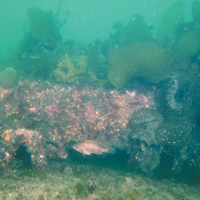 Ecklonia kurome |
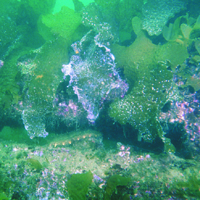 Ecklonia kurome |
 Ecklonia kurome |
||
| Survey date: March 2017 10 years after installation | ||||
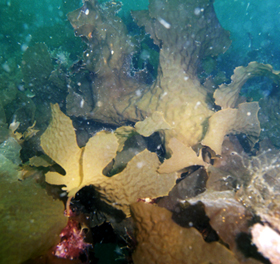 Ecklonia kurome |
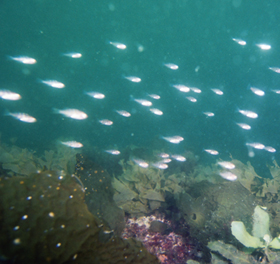 Ecklonia kurome/ juveniles of Sebastes inermis |
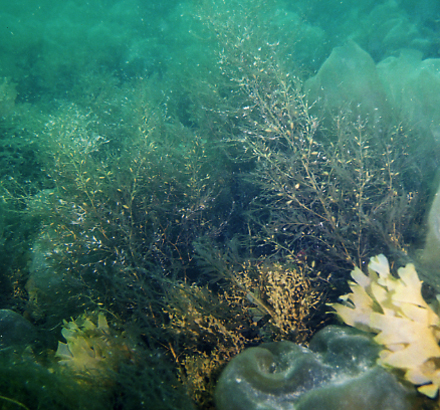 Ecklonia kurome/Sargassum sp. |
||
10.Off the coast of Itsuwa town, Kumamoto Prefecture
In this area had been scuba dives and surveys of benthos on the blocks
for three years, with a lot of macro brown algae observed in each survey.
In the first survey, a lot of Ecklonia kurome were seen. In the second
and third surveys, the number of Undaria pinnatifida and Sargassum sp.
increased.
In addition, rock fishes observed in the gaps of seaweed tend to increase
in number year by year, and it is thought that the block is used as a hiding
place.
| Year of creation 2005 |  πBlock2ttype |
 |
||
| water depth 4m | ||||
| Survey date: March 2007 16 months after installation |
||||
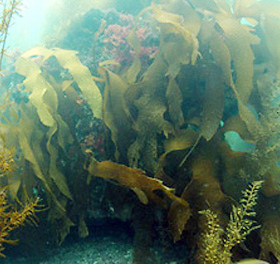 Ecklonia kurome |
 Sargassum sp./ Sebastes inermis |
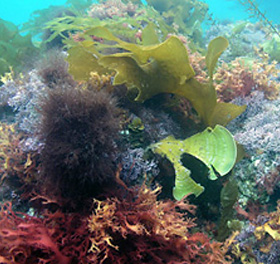 Meristotheca papulosa/ Ecklonia kurome |
||
| Survey date: March 2008 18 months after installation | ||||
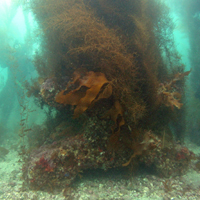 Ecklonia kurome/Sargassum sp. |
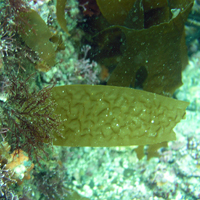 young Ecklonia kurome |
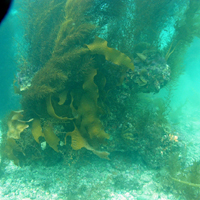 Ecklonia kurome/Sargassum sp. |
||
| Survey date: March 2009 40months after installation | ||||
 Sargassum sp. |
 Meristotheca papulosa |
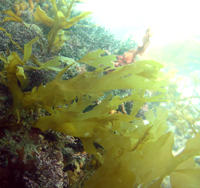 Undaria pinnatifida |
||
バナースペース
Kaiyo Doboku Co., Ltd.
Address: 2-11-5 Futaba, Shinagawa-ku, Tokyo, Japan
〒142-0043
TEL +81-3-6426-1024
FAX +81-3-6426-1034

